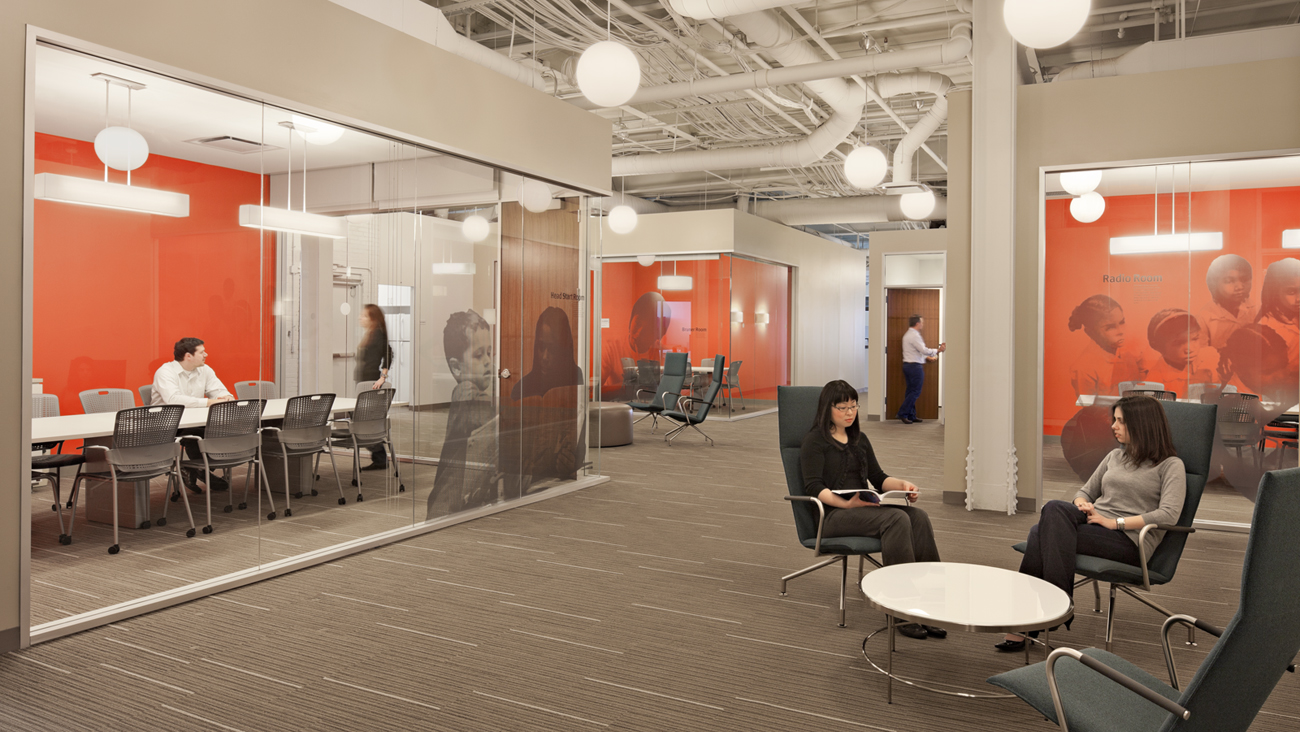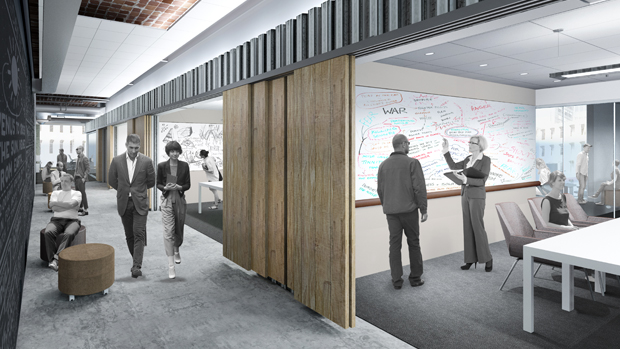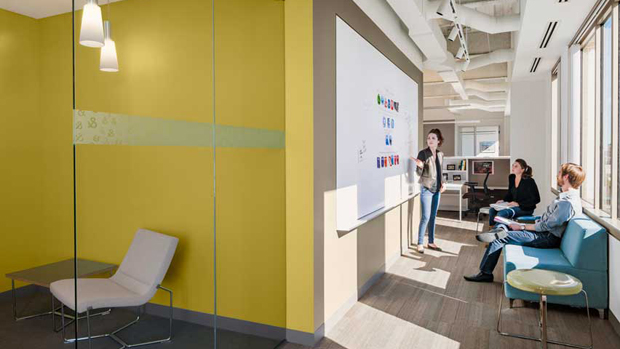Open layouts are grabbing headlines as a hallmark of the new workplace—think the Google campus or Facebook’s headquarters. And for smaller-scale operations, open designs are often lauded for being less expensive than private office plans. But does that mean all offices should have an open layout? Will an open floor plan improve your services or products? Will the lower cost up front provide a good return on investment?
As with most important business considerations, there isn’t a blanket answer. Predominantly open, predominantly private, and hybrid offices are all valid approaches—as long as you’ve carefully considered your organization’s culture and the business objectives you hope to achieve through your new or renovated space.
Set your goals
Before putting pen to paper in the design process, it’s important to ask questions—lots of them—to understand the desired culture and business goals that will drive design decisions. For example:
- Who are you? What are you trying to do?
- What kind of work drives your business? Is it research? Sales calls? Group collaboration?
- What kind of workers are you trying to attract—both in terms of skills and demographics?
At the Education Development Center (EDC), acoustical privacy is critical for their staff, which is primarily comprised of researchers. At the same time, they wanted to foster collaboration within and between teams. So at their new Waltham headquarters, EDC opted for a mix of 35% private offices and 65% open plan with considerable sound masking. Quiet neighborhoods of 15 or 20 people feature a mix of semi-open workspace and private offices. People come together for more collaborative work in the “piazza”—a zone of transparent enclosed spaces and very open areas that are situated far from the quiet zones. Joanne Brady, EDC’s SVP says, “The result is more common ownership and use as well as an emerging norm for ‘lift your head up, come out of your office, and talk to a colleague when it is productive.'”
In contrast, collaboration is fundamental to an ad agency’s culture and output. In our design for the new Havas/Arnold Worldwide headquarters in downtown Boston, 99% of employees will work in an open collaborative environment. Teams have easy informal access to one another and shared amenities. A hub of collaborative spaces at the heart of the building will facilitate collaboration, while open but quieter individual work zones will make up the periphery of the office.
Before arriving at the final design, we tested the bench workstations with the Arnold staff. Even though we were confident this was the best solution through our research-based iterative process, change management is also an essential part of interior architectural design. Open layouts can have tremendous results, but must be thoughtfully introduced to reach their full potential—especially if the majority of staff is used to traditional layouts.
Both/and—not either/or
There are a couple of caveats with an open layout—even for companies that depend on collaboration. Throughout the day, certain tasks and conversations require confidentiality. And some individuals just need a quiet space to focus in order to be effective. But the need for privacy doesn’t automatically make the case for private offices for individuals. We’ve found that making smaller private spaces available to everyone can also accommodate these periodic needs.
At ad agency Allen & Gerritsen, one of the primary business objectives in the design of their space was to attract and retain a multi-generational workforce, which means a wide range of working-style preferences. In their new offices, employees can work in the open café, semi-private informal team spaces, small enclosed phone rooms, private conference rooms, or in their individual work neighborhood. By creating a range of spaces accessible to everyone, workers can choose the place in which he or she can be most effective given the work they need to do right then.
There is no one-size-fits-all approach. But through an iterative process, you can determine what space configuration—or blend of approaches—is truly the best option to make your staff engaged and productive, and working towards your greater business objectives.




